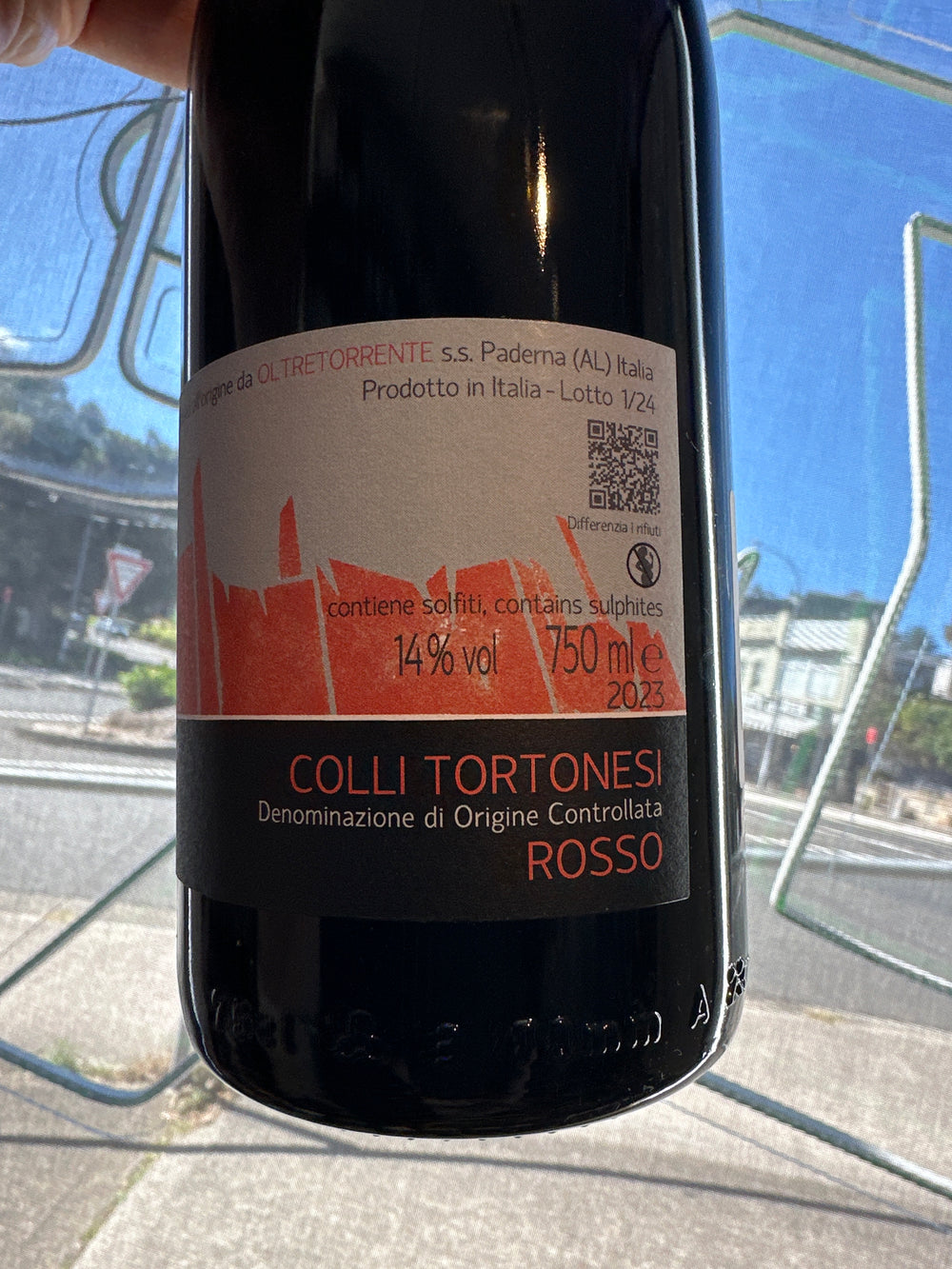
Oltretorrente 'Colli Tortonesi' Rosso 2023
The Wine
This wine is crafted from all the estate's red grapes not allocated to the Barbera Superiore. Spanning over 3 hectares, several parcels are harvested for this blend. The vines, planted between 1955 and 1990 at a density of 6,000 plants per hectare, face both north and south. In 2018, the blend consisted of approximately 90% Barbera and 10% Dolcetto, with small amounts of Croatina, Freisa, Slarina, Brachetto, and Aleatico, all co-planted throughout the vineyards, contributing to the wine. Harvesting took place between September 24th and October 3rd, yielding 7,500 kg per hectare (about 41 hl/ha). The bunches were destemmed, and fermentation occurred spontaneously in concrete vats with a maceration period of one month. The wine was aged in concrete on fine lees for six months.
A significant step up from the previous vintage (2022) - This 2023 is a delicious blend of Barbera and Dolcetto. Notes of ripe plums, cherries and raisins. Great play between fruit and acid/structure but best to decant to let the flower blossom!
The Details
Variety - Barbera, Dolcetto
Country - Italy
Region - Piemonte
Sub Region - Colli Tortonesi
Extra - Cork
Year - 2023
Volume - 750ml
About the Wine Maker 
After years of working in traditional wineries, Chiara Penati and her husband Michele Conoscente founded Oltretorrente in 2010 by purchasing 1.5 hectares of vineyards. Both agronomists from Milan with experience across Italy, they decided to create their own venture in Paderna, a quiet village in the Tortona hills (Colli Tortonesi) of southeast Piedmont, where only 30 estates bottle wine.
Oltretorrente, meaning "Beyond the Stream," refers to the Scrivia, a Po River tributary, but it can also mean "Countercurrent." Today, the estate spans 7.5 hectares (7 owned and 0.5 rented), with vines aged 15 to 100 years at altitudes of up to 300 meters. The steep slopes often require traditional farming methods when heavy rains render machinery useless. Current production is 25,000–30,000 bottles annually, a significant increase since 2018 with the addition of new vineyards.
The couple practices organic farming, incorporating some biodynamic methods. They’ve restored soil fertility by planting grass in previously hoed soils and conducted detailed soil analyses across their 10 parcels to identify the most beneficial plants. They harvest each parcel separately to maintain its unique characteristics.
In the cellar, maceration and aging processes vary depending on the vintage. For white wines, whole bunches are pressed without destemming, with no skin maceration and optional malolactic fermentation. For reds, they harvest late for full ripeness, followed by long macerations. Both whites and reds are aged on the lees to enhance complexity.
Colli Tortone, located in the hilly Alessandria province east of the city, is renowned for its Barbera grape. However, in the past decade, the white grape Timorasso has experienced a revival, gaining near cult status among enthusiasts. Historically, Colli Tortonesi was under the rule of Pavia and Milan, with its wines often supplied to the workforce constructing Milan's cathedral. The wine production here has traditionally been influenced more by Lombardy (Milan) than by Piemonte.



